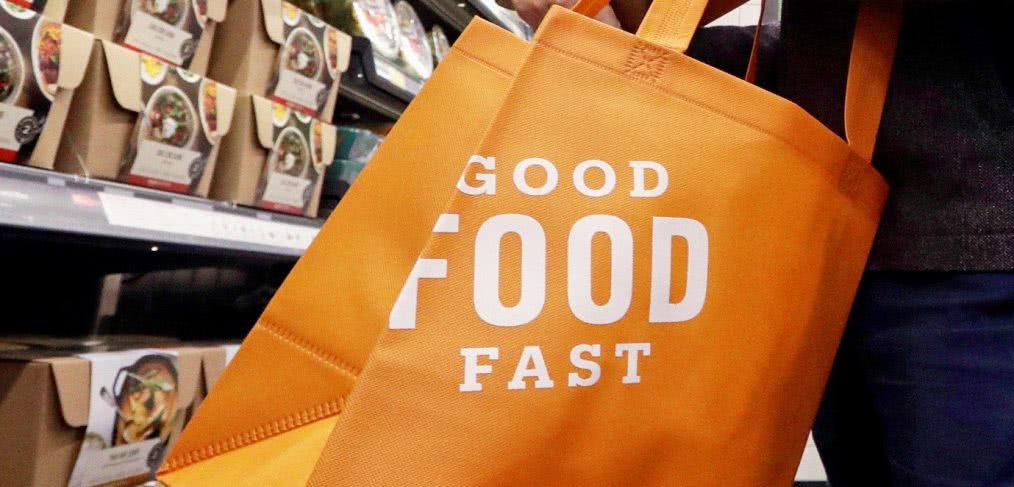
Balancing Convenience and Connection
One day, while waiting for my bus in downtown Seattle, I noticed two men walk by with crisp, bright orange shopping bags in hand. They carried them with the same sense of pride and prestige as a New York fashionista walking out of a Chanel store. Ahhh, yes, I remembered. Amazon Go is open. I made a mental note to check it out when I had time.
A week or so later, I made my way over to 7th Avenue. How was it? Well, let me say this: Amazon’s take on the corner bodega feels like a literal translation of its algorithm-driven online shopping experience into a physical store environment. A minimalist black exterior with laser-cut paneling alludes to the technological precision governing the shopping experience inside, while large glass windows provide a view to a carefully aligned display of neatly packaged, “upscale gourmet” branded products.
When I walked in, there was a guy standing by the door directing me to use the Amazon Go app to get through the gates, which reminded me of subway entrances in Seoul. I downloaded the app, scanned it, and open sesame. I hurriedly passed through before the gates retracted.
Inside, Amazon Go is decidedly more airport grab-and-go than corner bodega. The meticulous, wall-to-wall open pantries of ready-to-eat items and other merchandise gave me the feeling that I was online browsing IRL.
I grabbed one of those bright orange totes, threw in a salad bowl from the cold pantry and walked out just as the lunch crowd was rushing into the store. Just outside the door that features signage reading “no lines, no checkout,” I see a huge group of people lined up on the sidewalk waiting for a cue from Amazon Go staff to be admitted, one at a time. Suddenly, I too felt as though I was coming out of some high-end store on the day a new limited-edition product had dropped—except I was coming out with groceries. About 10 minutes later, I received a message on my phone thanking me for visiting, along with a receipt for my purchase.
Of course, this is the point of Amazon Go: a seamless, frictionless experience made possible by the miracles of technology. But the product is the same as what we once found at the Whole Foods 365 that recently closed down in Bellevue—beautiful packaging, colorful food and fancy gourmet descriptions, but relatively tasteless. And the experience? Thanks to the total lack of human interaction (aside from the bouncer at the door), pretty sterile.
While Amazon’s journey from the web to the street is still in its experimental stages, the message here is relevant for any and all retailers plotting out their omnichannel strategy.
In the process of making things faster and more convenient, are we risking the loss of what’s engaging and meaningful about the shopping experience?
At the end of the day, if the store—and the brand—are really going to be part of the community, it needs to be connected, and it needs to make their customers feel connected.
And did anyone pick up on the irony of the huge line visible just outside the sign touting no lines and no checkout? There’s still a line; it just moved from the check-out to the entrance. But according to Jeff Carvalho, executive editor of Highsnobiety, as quoted in the New York Times, “the line is the new community.” People want to be seen in the line, first and foremost, because it means they’re in the know; but if we’re to buy into the “cult of the line,” we also must acknowledge that possibility that it provides its own sense of camaraderie.
But is this sense of community built around FOMO and chasing the next big thing enough to supplant the neighborly relationships formed in the local mom-and-pop or corner store? Maybe the former suits the tech savvy millennial and Gen Xer just fine, but I couldn’t help feeling like something was missing as I quietly exited Amazon Go, out of reach of the cameras and sensors. After all, the human element will always be fundamental to the brick-and-mortar shopping experience, so maybe the future of the marketplace lies in a carefully thought out balance between convenience and connection.
